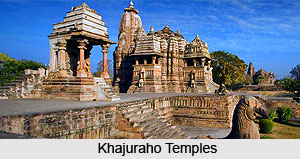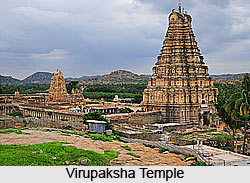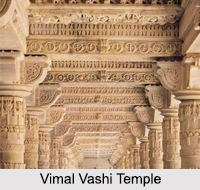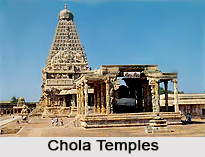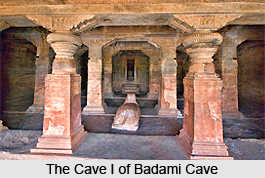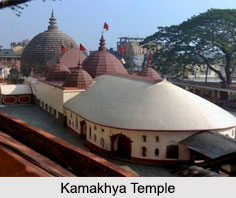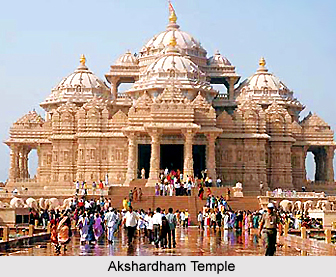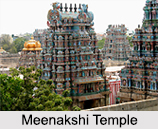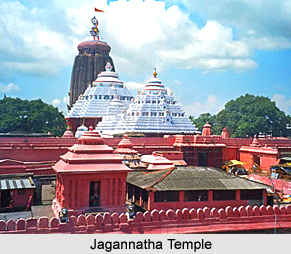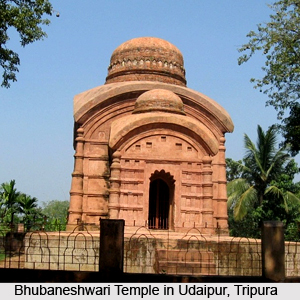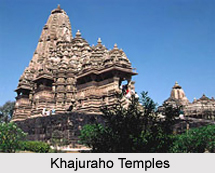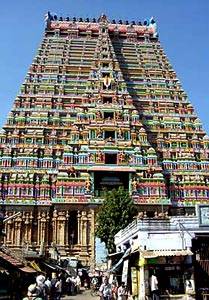 There are several temples in various parts of South India. These temples have not only attracted the worshippers but have also been venues for expression of the creativity of the human spirit using a range of media. Various forms of art in a variety of shapes and forms are promoted by these temples. The art forms like music and dance, architecture, sculpture, woodwork and paintings are encouraged by these temples of South India. The murals of these temples are also very beautiful and attractive.
There are several temples in various parts of South India. These temples have not only attracted the worshippers but have also been venues for expression of the creativity of the human spirit using a range of media. Various forms of art in a variety of shapes and forms are promoted by these temples. The art forms like music and dance, architecture, sculpture, woodwork and paintings are encouraged by these temples of South India. The murals of these temples are also very beautiful and attractive.
The word mural has the dictionary meaning `a very large image applied directly to a wall or a ceiling`. There are different ornate murals found in several temples all over India as a part of the complex embroidery of decorative work that have evolved through the ages.
The mural on the ceiling of the shrine at the Veerabhadreshvara temple at Lepakshi in Andhra Pradesh in South India is the largest mural ever painted in Asia.
The Ajanta paintings are the renowned murals of Southern India. These paintings date back to the earlier part of the 1st millennium A.D. and are primarily Buddhist in religious affiliation. These murals were painted with vegetable and mineral dyes in caves and were discovered in early 19th century. The murals at Ajanta represent the Buddha and also the instances from the Jataka tales. The caves of Ajanta and Ellora have become a well-visited tourist circuits in the state of Maharashtra for these murals.
The murals of Badami in Karnataka depict the royal court of Indra, the king of the Devas. These murals were of the 6th century Chalukyan rulers of South India, who also used painting as a medium to express their creativity. The Jain murals from the Pandya period can be seen in the Sittannavasal near Pudukkottai in Tamil Nadu. The 11th century AD murals can be seen in the Brihadishvara temple in Tanjavur. The area surrounding the sanctum here has brilliant works of art, both in terms of sculpture and painting. The walls and ceilings of this enclosure were once all covered by the ancient Chola murals. Later, in the 17th century, the paintings of the Nayaka period got added over them. But, few of the older Chola murals have been restored afterwards.
There is an image of the monarch Rajaraja Chola I in this enclosure around the sanctum. This king was primarily responsible for temple centred cultural growth and in these murals he was shown with his preceptor Karuvur Devar. He also renovated and rebuilt most of the temples with stones in the Chola kingdom. There is a very important mural found here, which depicts the grand cosmic dance of Nataraja at Chidambaram. These murals also depict the images of Rajaraja Chola and his queens. There is also a gigantic painting of Siva as Tripurantaka, depicted on the northern wall of the enclosure. The main temple is surrounded by a large circumambulatory passage (prakaram). It is bounded by fortress like walls lined with a pillared cloister. The mural paintings on the walls belong to much later periods.
The Lepakshi in Andhra Pradesh has the Virabhadreshvara Swami temple, which was built by the Vijayanagar rulers. Many exquisite carvings can be seen in the unfinished kalvana mandapam of the temple. The collossal Nandi and its elegant murals which depict the various manifestations of Lord Siva are also attraction point of this temple.
The murals here are full of vitality. These murals include the depictions of Kiratarjuneeyam, Dakshinamurti and the divine wedding of Siva and Parvati. Several paintings narrating the legend of Manunidhi Cholan can be seen in the 50 feet long panel of the taukha mandapa of the temple. These are also portrayed in Tiruvarur which incidentally also houses murals depicting the legend of Mucukunda Chakravarti. The taukha mandapam also contains the paintings depicting Lord Krishna as a child and scenes from the Mahabharata illustrating Draupadi`s wedding.
The paintings of 14 of the manifestations of Siva (Dakshinamurti, Chandesa Anu-grahamurti, Bhikshatana, Harihara, Ardha-narishvara, Kalyanasundara, Tripurantaka, Nataraja, Gowriprasadaka, Lingodbhava, Andakasurasamhara etc.) can also be seen in the ardhamandapam of the Lepakshi temple. The ceiling of the sanctum has a large painting which is said to be Asia`s largest mural. This large painting of Veerabhadra measures about 23 feet by 13 feet. The paintings depicting the incarnations of Vishnu can also be seen in the Lepakshi temple of South India. This temple is an unfinished temple (in part), but is a perfect synthesis of architecture, sculpture and painting.
The brilliant murals in the Srirangam temple of South India portray the art treasures in a vast temple complex that is also a repository of ancient worship traditions. These murals show that the patronage of the Vijayanagar rulers extended deep into Tamil Nadu. The 300 year old paintings depicting scenes from the legend epics can be seen in the innermost circumambulatory passage of the Srirangam temple.
The Brihadishvara temple of Kerala contains more recent murals, which were painted over the more ancient Chola paintings. These were patronised by the Nayaka and the Maratha rulers of the 17th to 19th centuries A.D. The Ananta Padmanabhaswamy temple in Tiruvananthapuram and the Ettumanur Mahadevar temple at Ettumanur also have the mural paintings inside them.
The chitrasabha or the hall of pictures in the Siva temple at Kutralam is one of the best displays of murals of South India. The chitrasabha mural is a house of paintings. The chitrasabha is a stand-alone structure, which is located a few blocks away from the Kutralanathar temple at Kutralam in southern Tamil Nadu. This is a wooden structure and the walls are covered with murals depicting scenes from the great Indian epics.
